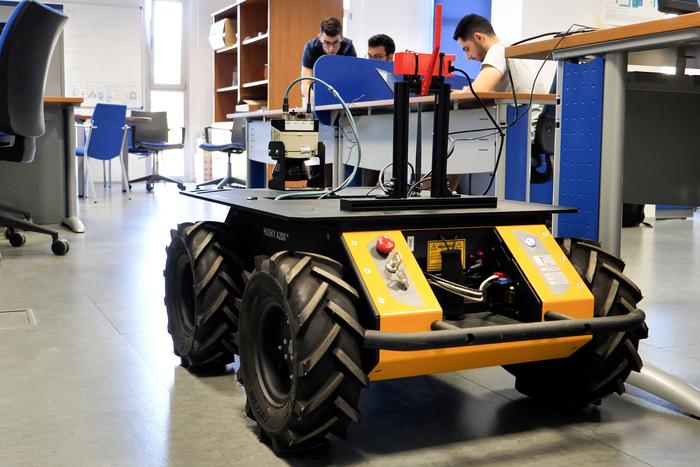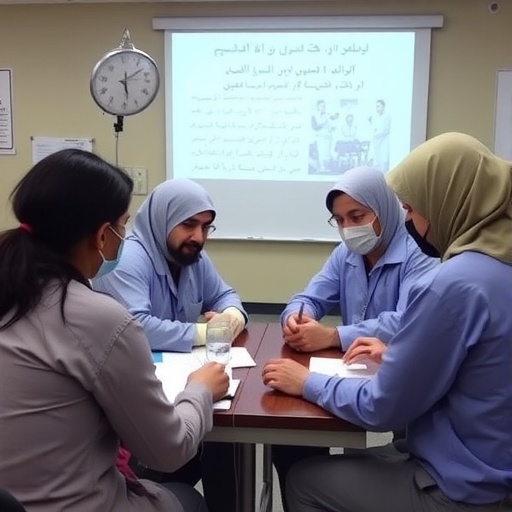The next-gen “digital twins” are created at the University of Malaga. Three engineers from the research group “ERTIS” have developed an open-source platform, more accessible and versatile, that enables the design of these technological tools that simulate real environments based on virtual replicas.

Credit: University of Malaga
The next-gen “digital twins” are created at the University of Malaga. Three engineers from the research group “ERTIS” have developed an open-source platform, more accessible and versatile, that enables the design of these technological tools that simulate real environments based on virtual replicas.
We refer to ‘Open Twins’, the first open-source integrated ecosystem of “digital twins”, which is able to combine the latest technology: Internet of Things (IoT), Artificial Intelligence (AI), monitoring, simulation models, and 3D visualization. This innovative platform of the UMA is published in the scientific journal Computers in Industry and its source code is fully available at GitHub.
Defined as “dynamic and digital representations of a real object, process or system that are able to imitate and analyze their behavior”, the researchers from the UMA, authors of this study, explain that although the term “digital twin” appeared in 2010, it was not until about five years ago that it reached the broadest use.
More complex structures
“So far, most of the existing platforms of this kind have been pay-platforms that can’t be modified”, stresses Manuel Díaz, Professor of the School of Computer Science of the UMA and Director of Ada Byron Research Centre, who says that “Open Twins” overcomes these limitations and, moreover, adds “compositionality”, that is, it enables the “twins” to connect with each other more easily, achieving more complex structures.
Open ecosystem
Likewise, the PhD candidate Julia Robles, main author of this study that is part of her doctoral thesis, highlights that precisely the integration of all components in a single platform, creating an “open ecosystem”, enables the prediction of future behaviors and, thus, the early detection of anomalies.
“At present, system simulation and modeling are indispensable tools in many industries, such as the manufacturing and automotive industries, since they can predict how real systems would work in different situations, preventing risks”, adds in this sense Cristian Martín, Professor from the Department of Computer Science and Programming Languages.
More efficient companies
This results in more efficient companies, which change their behavior patterns based on the information provided by the “digital twins”. “Thanks to them it is possible to access some sort of a digital “clone” of a real object and know its past, present and future state without direct interaction with it. This makes it easier for companies to make more intelligent decisions, reduces costs and increases quality”, concur the authors.
Applications for the industry and the agricultural sector
An agricultural project to measure the accuracy of an irrigation plan, developed together with the University of Córdoba; a robot the communicates through 5G technology to control movement in the experimental farm “La Mayora”, for the purpose of predicting the ripening and optimum point of ripeness of fruits; or a predictive model developed for the petrochemical industry 4.0 are some of the real applications of “digital twins” carried out by the engineers of the “ERTIS” group of the UMA.
“ERTIS”, belonging to the Institute for Software Engineering and Software Technology (ITIS), is located in Ada Byron building at Teatinos Campus and focuses on the development of intelligent IoT systems for the industry and the agricultural sector. The project “OpenTwins: An open-source framework for the development of next-gen compositional digital twins” was coordinated by researchers Julia Robles, Cristian Martín and Manuel Díaz.
Bibliography:
Julia Robles, Cristian Martín, Manuel Díaz (2023). OpenTwins: An open-source framework for the development of next-gen compositional digital twins. Computers in Industry. Volume 152,104007, ISSN 0166-3615.https://doi.org/10.1016/j.compind.2023.104007
Journal
Computers in Industry
DOI
10.1016/j.compind.2023.104007
Method of Research
Computational simulation/modeling
Subject of Research
Not applicable
Article Title
OpenTwins: An open-source framework for the development of next-gen compositional digital twins
Article Publication Date
22-Aug-2023




